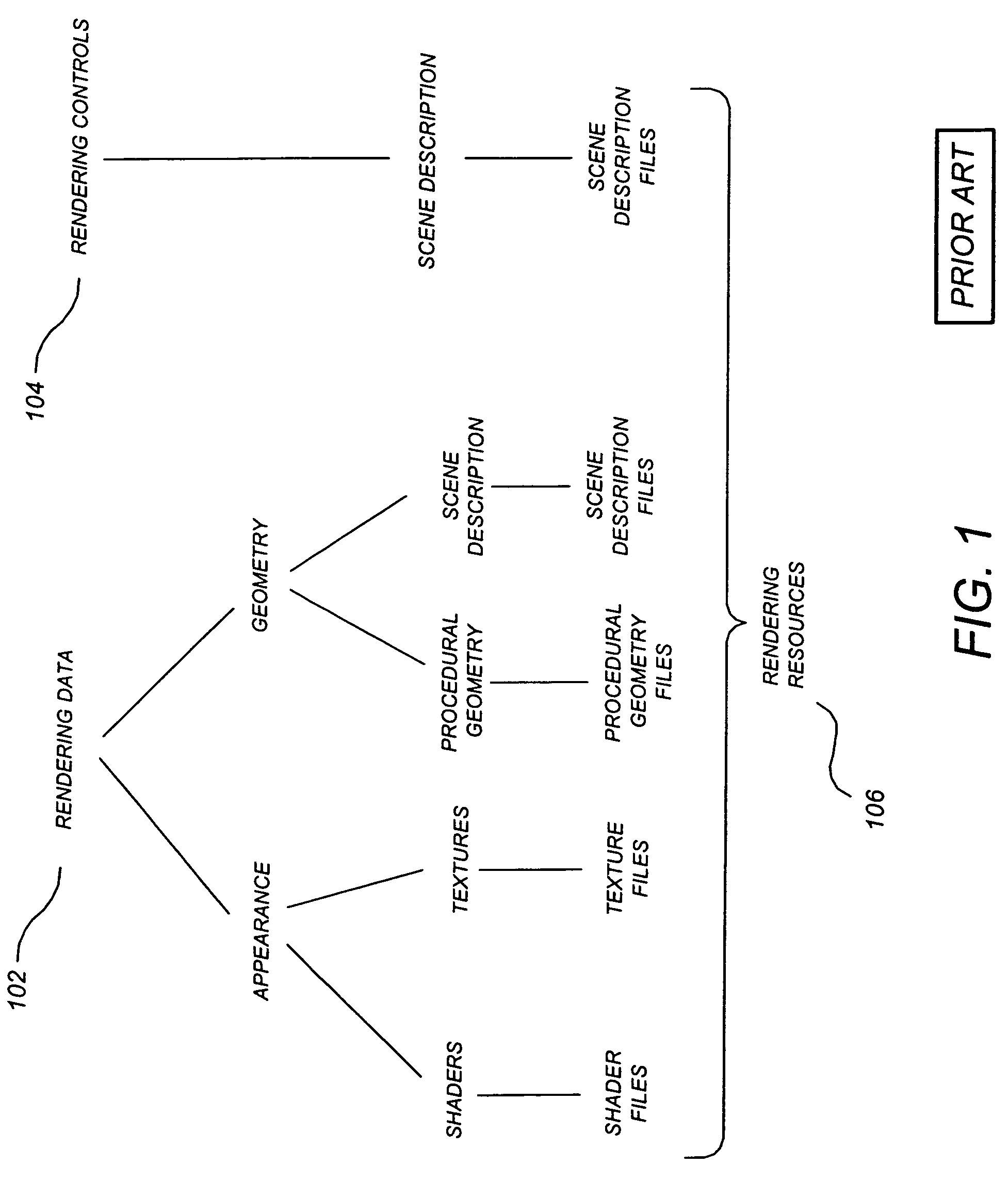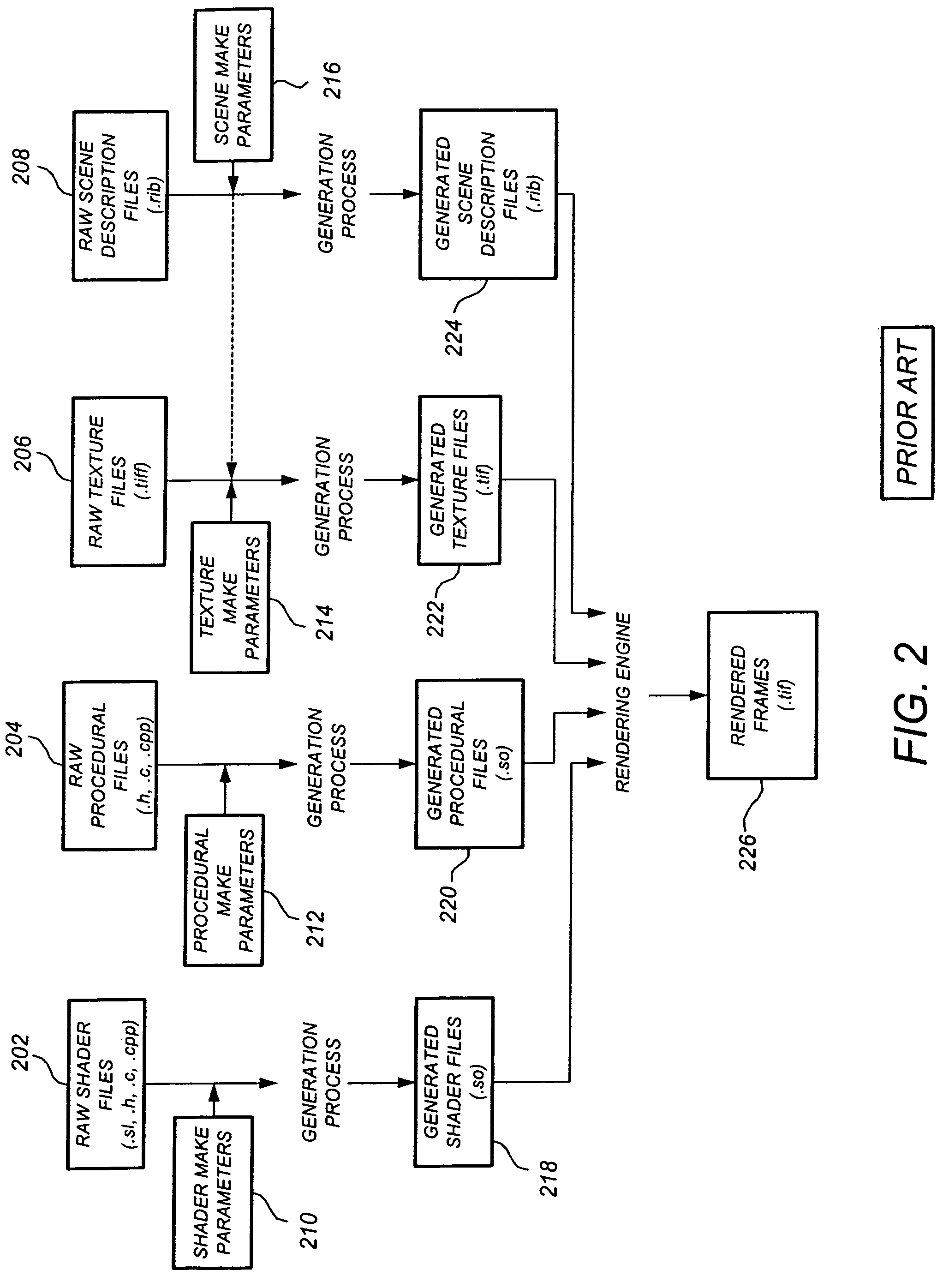Method and system for digital rendering over a network
a network and network technology, applied in the field of digital rendering systems, can solve the problems of increasing the size of the file or array containing the model, increasing the model, and not being suitable for viewing, so as to achieve the effect of conserving the bandwidth between the client site and the rendering service si
- Summary
- Abstract
- Description
- Claims
- Application Information
AI Technical Summary
Benefits of technology
Problems solved by technology
Method used
Image
Examples
Embodiment Construction
[0044]The preferred embodiments described herein may be advantageously used in conjunction with the system described in Nicolas et. al., “Method and System for Creating and Managing a Digital Content Creation Project Over a Network,” U.S. Ser. No. 09 / 738,466, filed Dec. 15, 2000, (BEL-020), which is assigned to the assignee of the present invention, and which is incorporated by reference herein. A remote rendering protocol (rrp) refers to methods and protocol items used to provide an efficient, reduced-redundancy rendering service for rendering data produced at a client site, as described herein. A goal of the rrp is to establish a fundamental interface for the rendering service. The rrp provides user authentication, session control, render description, status control and monitoring, and resultant image transfer dialog items.
[0045]The challenge of a qualitative remote rendering service is on both the imagery produced and the ability to sustain a balance between rendering compute tim...
PUM
 Login to View More
Login to View More Abstract
Description
Claims
Application Information
 Login to View More
Login to View More - R&D
- Intellectual Property
- Life Sciences
- Materials
- Tech Scout
- Unparalleled Data Quality
- Higher Quality Content
- 60% Fewer Hallucinations
Browse by: Latest US Patents, China's latest patents, Technical Efficacy Thesaurus, Application Domain, Technology Topic, Popular Technical Reports.
© 2025 PatSnap. All rights reserved.Legal|Privacy policy|Modern Slavery Act Transparency Statement|Sitemap|About US| Contact US: help@patsnap.com



